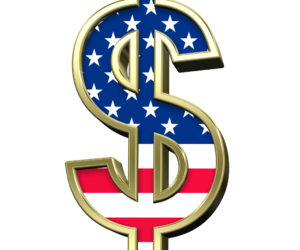The following is completely anecdotal, which means it is useless as intelligent analysis. I make no claim to understanding the theory or practice of figuring the inflation rate any more than I can “understand” the Holy Trinity or Quantum Mechanics.
But something is horribly wrong with the “official” inflation numbers. They are meaningless to anyone who has to live in the real world and is watching in horror as food, fuel, and the cost of other goods we buy regularly go through the roof.
I used to think it was just us, that we were overspending on food and not being economical with the car. I don’t think that anymore. Our food bill has increased 20% in less than 6 months and we have watched gas prices make an uneven climb toward the $4 a gallon mark.
OK – everyone can see the correlation there. Trucks bring food to the stores and if gas increases substantially, the cost of food will increase as well. Since gas has gone up 25 cents per gallon over the last 6 months, it stands to reason that food will have had a corresponding increase – or something close to it.
But the increase has been very uneven. Some processed foods have remained nearly the same while others have shot up. Fresh fruit and veggies are through the roof. Bread has gone up nearly 40%. The price of fresh meat has also taken off while even off-brand canned goods have increased substantially.
Having worked in a grocery store (customer service manager), I know that there is an art and science to pricing stock. The marketing people will hold the line on some popular items while increasing the cost of others based on arcane formulas and research into customer buying habits. But the proof is in our monthly food bill.
I started to keep very careful track of what we were spending on food every month, largely because I believed we were buying a bunch of stuff we didn’t need and could do without. Naturally, Sue took umbrage at this. She is proud of her skills as a shopper, visiting three stores every time she went for the month’s major grocery purchases in order to get the best possible price on fresh fruit and veggies, meat, deli, and canned goods. For the last 5 months we have kept every receipt – even if it was just to the corner store to get some milk or deli.
The results floored me.
Comparing the same items month to month was an eye opener. Ground round has increased 35%. Our Alfredo sauce went up 40%. Seasonal fluctuations can account for the rise in fresh fruit and veggies. But an increase of 110% for lettuce?
Instead of spending $500 a month on food, we are spending about $625 – a 20% increase. That’s can’t be all”volatility.” Along with the increases in gas and fuel costs, the cost of living at my house is rising far faster than any “official” rate.
I am not one to believe in some kind of Obama conspiracy. The BLS wouldn’t be able to get away with fudging the numbers The unemployment rate is also a fantasy number but not because of any deliberate attempt to fiddle with the numbers either. Both indices are calculated based on criteria that is out in the open for all to see.
The problems as I see it are twofold: What goes into the”market basket” used to figure inflation, and how the unemployment figures are reported in the press.
Basically, the things that really impact our personal cost of living are devalued in the market basket used today while other stuff that we might buy occasionally are seemingly given more weight. The reason isn’t to “hide” the true cost of living but because of the price “volatility” of certain items that would skew the CPI when measured month to month and year to year.
The reported unemployment rate is trickier. Much of the actual rate compared to the official rate is buried in a blizzard of data that would include part time workers, workers too discouraged to look for work, and those who have dropped out of the workforce entirely. But the business press is lousy in this country and they do an awful job – with some exceptions – of putting all those numbers together in order to give us an accurate picture of how good/bad things are in the job market. You are much better off reading econ blogs who, if you can get through their explanations without your eyes glazing over, do a better job of giving a “big picture” look at what the job market is doing.
So the CPI is not used to inform us about our personal financial situation, but to guide the Fed and politicians in formulating policies. A fat lot of good that does the average consumer who is watching helplessly as he becomes poorer by the month. The official inflation rate in January was just 2.9%. From January 2011 to January 2012, the yearly rate was also 2.9%.
Everyone I’ve talked to is mad about prices and thinks those numbers are a crock. They have the exact same reaction I’ve had to the official rate of inflation – like, “Who are you trying to kid?” Most see the hand of politics in these numbers but that just isn’t credible. It’s too easy to check the BLS’s math to see if they are being ordered to give fictitious numbers.
The purchasing power of the average American is seriously eroding and no one is doing anything about it because the “official” numbers are telling us that all is well – no reason to panic. Food, gas, and fuel to heat our homes are all going up far faster than that government inflation number. And now, even the cost of renting our homes or apartments is beginning to rise. Those 4 “market basket” items represent the bulk of our monthly expenditures.
Some smart politician running for president is going to start articulating what the vast majority of us are experiencing on the inflation front. The one who does will probably end up winning in November.
But is it any wonder that most people you talk to these days thinks the CPI is a load of crap?
















